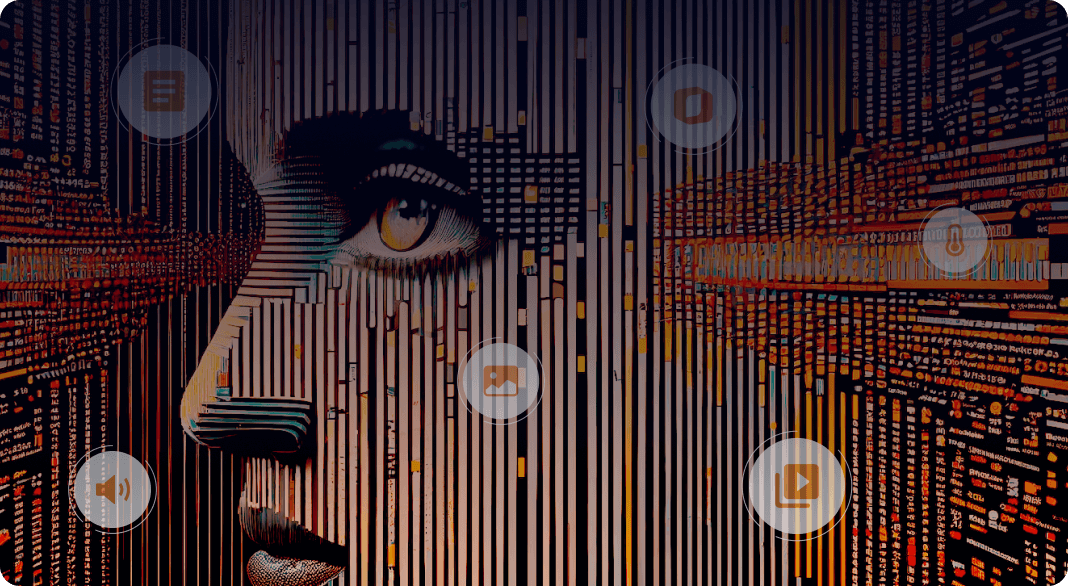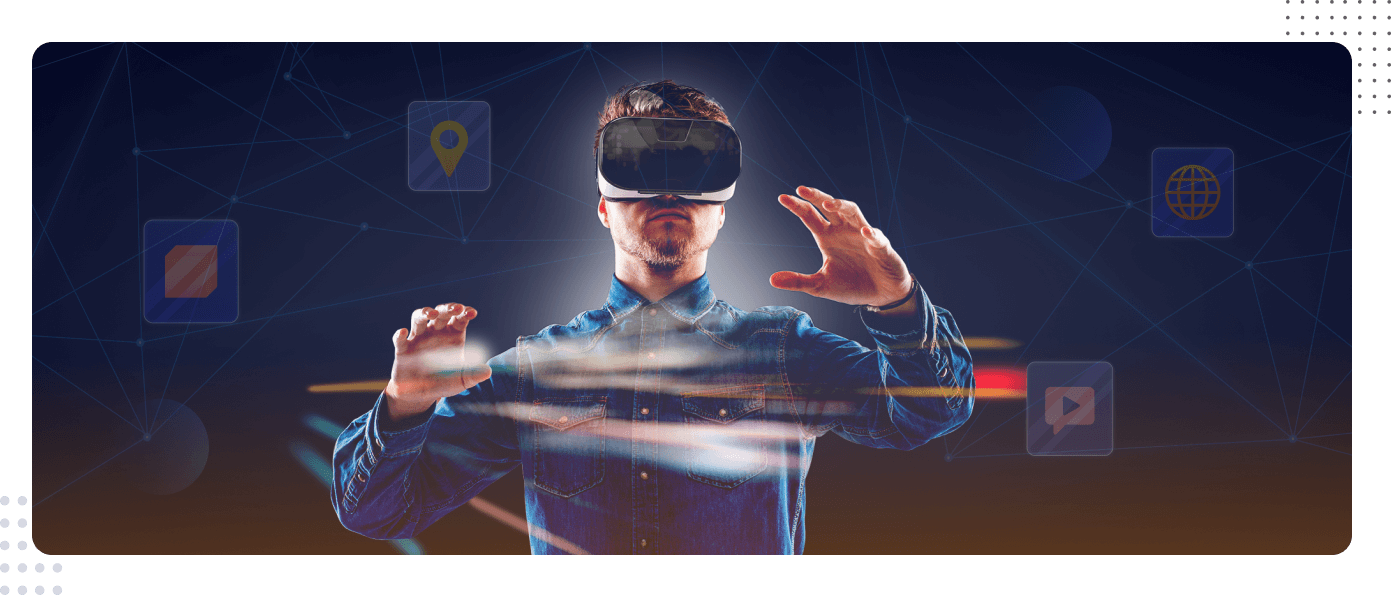ChatGPT Revolutionizing Customer Service and Experience
Discover the game-changing potential of ChatGPT in this article. Explore how AI-powered chatbots are reshaping customer support, driving...

The article presents an in-depth exploration of ImageBind AI Perception, an innovative system revolutionizing multimedia experiences. By leveraging diverse data like images, videos, and 3D measurements, ImageBind generates captivating 3D scenes. It showcases the system's advanced perception technology and its potential applications in animation, multimedia production, and improving accessibility. The article also highlights ImageBind's efficient learning capabilities and its future expansion possibilities.
This article dives into the transformative power of ImageBind AI Perception in revolutionizing multimedia. It focuses on the integration of images, videos, and 3D measurements to create immersive 3D scenes, highlighting the system's ability to enhance multimedia content. The scope extends to exploring applications in animation, multimedia production, and accessibility improvements for individuals with
ImageBind by Meta is revolutionizing the way we perceive and interact with digital media. By combining different modalities, this cutting-edge technology constructs fully realized 3D scenes and generates real-time multimedia descriptions from limited chunks of data. In this blog post, we will delve into the capabilities of ImageBind AI Perception and explore its potential applications across various industries.
We will discuss how ImageBind AI can enhance animation and multimedia by bringing static images to life through motion data, depth information, and video sequences. Additionally, we'll investigate the possibilities of how ImageBind AI Perception can improve accessibility for those with impairments by offering real-time help to visually impaired people or audio-based direction systems for those who are hard of hearing.
Lastly, we'll take a closer look at the joint embedding space across modalities that enables efficient learning without exhaustive training. As ImageBind AI Perception continues to evolve, incorporating touch sensors or analyzing brain signals could further expand its "senses" – ultimately leading to a more holistic understanding of human cognition.
The innovative ImageBind AI, aims to mimic human perception by linking various types of data such as text, images, videos, audio, 3D measurements, temperature data, and motion data. This groundbreaking tool can generate complex environments from simple inputs like a text prompt or an image. By creating multi-sensory connections similar to the human brain, ImageBind combines different modalities for a more comprehensive understanding and generates fully realized scenes based on limited chunks of data. This moves machine learning closer to human learning and opens up new possibilities in software development.
ImageBind AI has the potential to drastically alter how we process and make sense of visual data, enabling us to craft more intricate images than ever before. With its applications in animation and multimedia, it can help bring creativity to life with unprecedented detail and accuracy.
The innovative capabilities of ImageBind AI have opened up exciting possibilities for multimedia content creation, particularly in the fields of animation and entertainment. By combining different modalities like audio prompts with static images, ImageBind can breathe life into previously motionless visuals.
Bringing static images to life through animation: Researchers demonstrated how this technology could animate a basset hound wearing a Gandalf outfit while balancing on a beach ball, showcasing its potential for creating engaging animated content.
Expanding creative possibilities for artists and animators: With ImageBind's ability to generate complex environments from simple inputs, it empowers creators to explore new avenues in storytelling and visual expression.
Animation and multimedia applications are becoming increasingly accessible with the help of ImageBind AI Perception, allowing artists to explore creative possibilities beyond traditional static images. Moving on, this technology can also be used to enhance accessibility for people with disabilities by providing real-time assistance or audio guidance systems.
The real-time multimedia descriptions generated by ImageBind AI can significantly improve accessibility for individuals with vision or hearing impairments. By providing detailed information about their immediate environment using multiple sensory modalities (visuals or sounds), this technology offers new ways for people with disabilities to better perceive their surroundings.
Real-time assistance for visually impaired users: ImageBind AI can create visual representations of the environment, helping those who are blind or have low vision navigate more easily and safely.
Audio-based guidance system for those who are hard-of-hearing: The tool's ability to generate audio prompts based on text inputs allows it to serve as an effective communication aid, enabling users with hearing difficulties to access important information in a format that suits them best.
By leveraging AI-based perception technologies, ImageBind is making it easier for people with disabilities to access the world around them. Moving on, our joint embedding space across modalities will enable us to efficiently learn from different combinations of input data and adapt quickly without exhaustive training.

The groundbreaking feature of ImageBind AI lies in its ability to create joint embedding spaces across multiple modalities without requiring training on every possible combination. This efficiency enables the tool to maintain high performance levels while dealing with diverse input types and generating outputs that effectively combine these varied sources.
Efficient learning process: ImageBind AI's approach reduces the need for exhaustive training, making it a more adaptable solution.
Adapting to different combinations: The technology can handle various combinations of input data, further demonstrating its versatility and potential applications.
This innovative method offers significant advantages over traditional machine learning techniques, paving the way for new possibilities in multimedia content creation and accessibility solutions.
Joint Embedding Space Across Modalities is a powerful tool for efficiently learning from different combinations of input data, allowing us to make more accurate predictions. Building on this foundation, we can explore new ways to expand ImageBind AI's "senses" by incorporating touch and analyzing brain signals in order to gain deeper insights into human cognition.
Meta envisions expanding the capabilities of ImageBind AI beyond its current six "senses" by incorporating additional modalities such as touch, speech, smell, and even brain fMRI signals. This expansion would further enhance the tool's ability to mimic human perception and create richer multi-sensory experiences.
Incorporating touch: Integrating haptic feedback technology could enable more immersive interactions in virtual environments or assistive devices for people with disabilities.
Analyzing brain signals: By tapping into brain fMRI data, ImageBind AI may gain a deeper understanding of human cognition and emotions, opening up new possibilities for personalized content generation or mental health applications.
ImageBind AI Perception by Meta is a powerful tool that combines different modalities to provide a more comprehensive understanding of data. It has the ability to generate fully realized scenes based on limited chunks of data, expanding creative possibilities for artists and animators.
The applications of ImageBind AI Perception are vast, including enhancing accessibility for people with disabilities through real-time assistance for visually impaired users and audio-based guidance systems for those who are hard-of-hearing. Additionally, it offers an efficient learning process without exhaustive training by adapting to different combinations of input data.
With ImageBind AI Perception, generating real-time multimedia descriptions is now possible. It uses image generators to create a mixed reality experience that mimics how humans perceive the world. By analyzing motion data and depth data from a video sequence, ImageBind AI Perception can create a realistic 3D model of the scene.
ImageBind AI Perception is a game-changer in the world of AI technology. Its ability to learn from human learning and adapt to different input data makes it a valuable tool for various industries.
Discover the game-changing potential of ChatGPT in this article. Explore how AI-powered chatbots are reshaping customer support, driving...
Unleash your creativity with DALL-E 2! Discover expert tips and strategies to maximize your AI-generated image results and revolutionize...
Discover the key trends defining the IT industry now. From AI to cloud computing, IoT to digital transformation, gain insights for business...